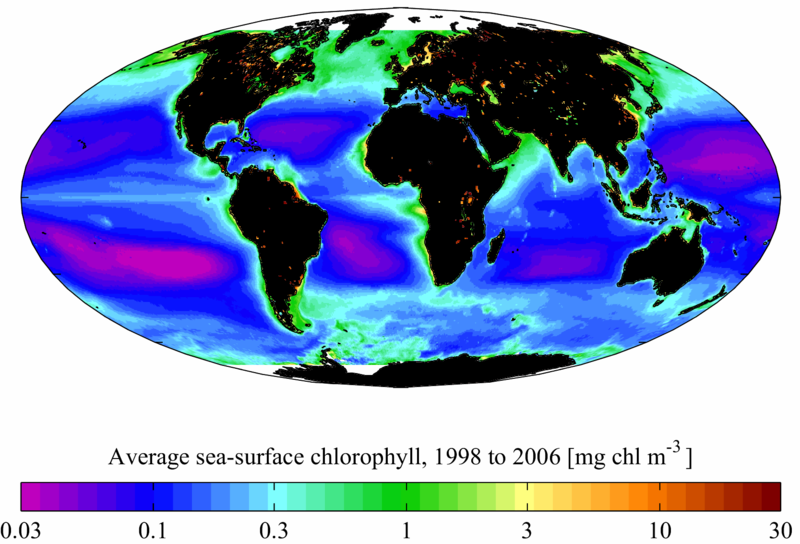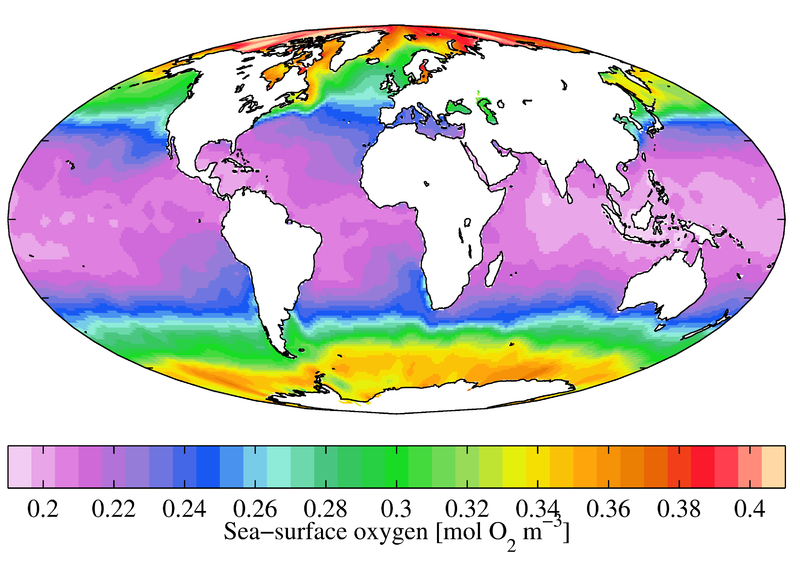Fellow Science Lovers,
Happy Easter!
Gaming update: Still hard at work on book 3. I hope to fix some minor bugs soon (especially the one where Mallory gets stuck in her falling animation after some jumps.)
Fish like it Cold?
In chapter five of Emolecipation, a gondola mole named Weeb says, “There’s fish. Cold currents from the Quasen Ocean bring plenty.”
Why do fish like cold water? Is this a quirk present only on Daishon? As it turns out, this holds true on Earth, too. Here’s why:
Nutrients
Fish like to eat each other. Marine mammals eat predatory fish. Predatory fish eat filter feeders. Filter feeders eat zooplankton. Zooplankton eat phytoplankton. And phytoplankton eat nutrients dissolved in the water. As far as I know, these nutrients don’t eat anything. 
Now I know you’re wondering where SpongeBob fits in this chain. As a sponge, he’s a filter feeder. But in the show, he eats Krabby Patties, which are veggie burgers. But I don’t think the show ever reveals what those veggies are. Anyhow…
To support all this life, nutrients must be present in the water. Here’s a map of nutrient distribution, as measured by chlorophyll levels:

-Plumbago at English Wikipedia, available under a Creative Commons Attribution-Share Alike 3.0 Unported license.
Wait, chlorophyll? Phytoplankton makes half of the world’s oxygen using chlorophyll, just like land plants do. This green pigment is easy to map because it changes the way water reflects and absorbs sunlight.
So we find the most chlorophyll, phytoplankton, and dissolved nutrients on the coasts and near the north and south poles. But why there? Let’s look at where nutrients come from.
Circulation of Nutrients
Fish poop and die, in that order, sending organic matter to the ocean floor. Bacteria decompose that matter, releasing nutrients. Phytoplankton want nothing more than to gobble those up (just ask your phytoplankton friends), but they can’t survive down where sunlight can’t reach. These nutrients remain on the ocean floor until the next upwelling dredges them to the surface again.
Upwelling
How does upwelling work? Of the several types, I’ll explain how it works on the coast. Trade winds blow across the ocean surface and push water away from land. Water then rises from below to replace the surface water that was pushed away. (A fuller explanation involves Coriolis effect and Ekman transport, which I won’t get into here.)
 |
Dr. Martin Pepper demonstrates this effect with a water tank and a blower. Yes, his name is Dr. Pepper! See this video: https://www.youtube.com/watch?v=Z2uc353n6us
Other factors:
-Cold surface water makes it easier for deeper water to rise. Conversely, warm surface water traps cooler water below it.
-Along many coasts, the rising slope of the sea floor helps push cold water up to the surface.
Oxygen Content
Aside from its role in upwelling, cold water can dissolve more gases. That means it holds more oxygen and carbon dioxide which fish and phytoplankton need to survive. In fact, the Antarctic Ocean averages six times more life per square meter than the other oceans!
Why does cold water dissolve more gases? When water heats up, molecules move faster, breaking the bonds between water and gas, allowing gas molecules to leave the water. Watch this short video to see it in action: https://www.youtube.com/watch?v=Kh6GuPtm6PE
In this colorful map, we’re looking at dissolved oxygen levels. And just as we’d expect, it’s highest near the poles where the water is coldest.

-Plumbago at English Wikipedia, available under a Creative Commons Attribution-Share Alike 3.0 Unported license.
There you have it. Cold water brings nutrients up from the deep ocean to feed all the critters near the surface, including SpongeBob.
Sources:
https://earthobservatory.nasa.gov/global-maps/MYD28M/MY1DMM_CHLORA
https://climategen.org/blog/what-is-life-like-under-the-surface-of-the-antarctic-ocean/
https://en.wikipedia.org/wiki/Krabby_Patty
“Fish poop and die, in that order.” I’m thinking of getting that cross-stitched into a throw pillow. 
Any science topic you’d like me to cover next? Reply to this email and let me know!
Writing update: So far, I’ve rewritten the first 24 chapters of Scribes Emerge, Scribes Series book 3. I’m wearing out the buttons on my calculator as I crunch the numbers for various engineering parts of the story, which might find their way into a newsletter someday.
See you next month,
Dylan West
